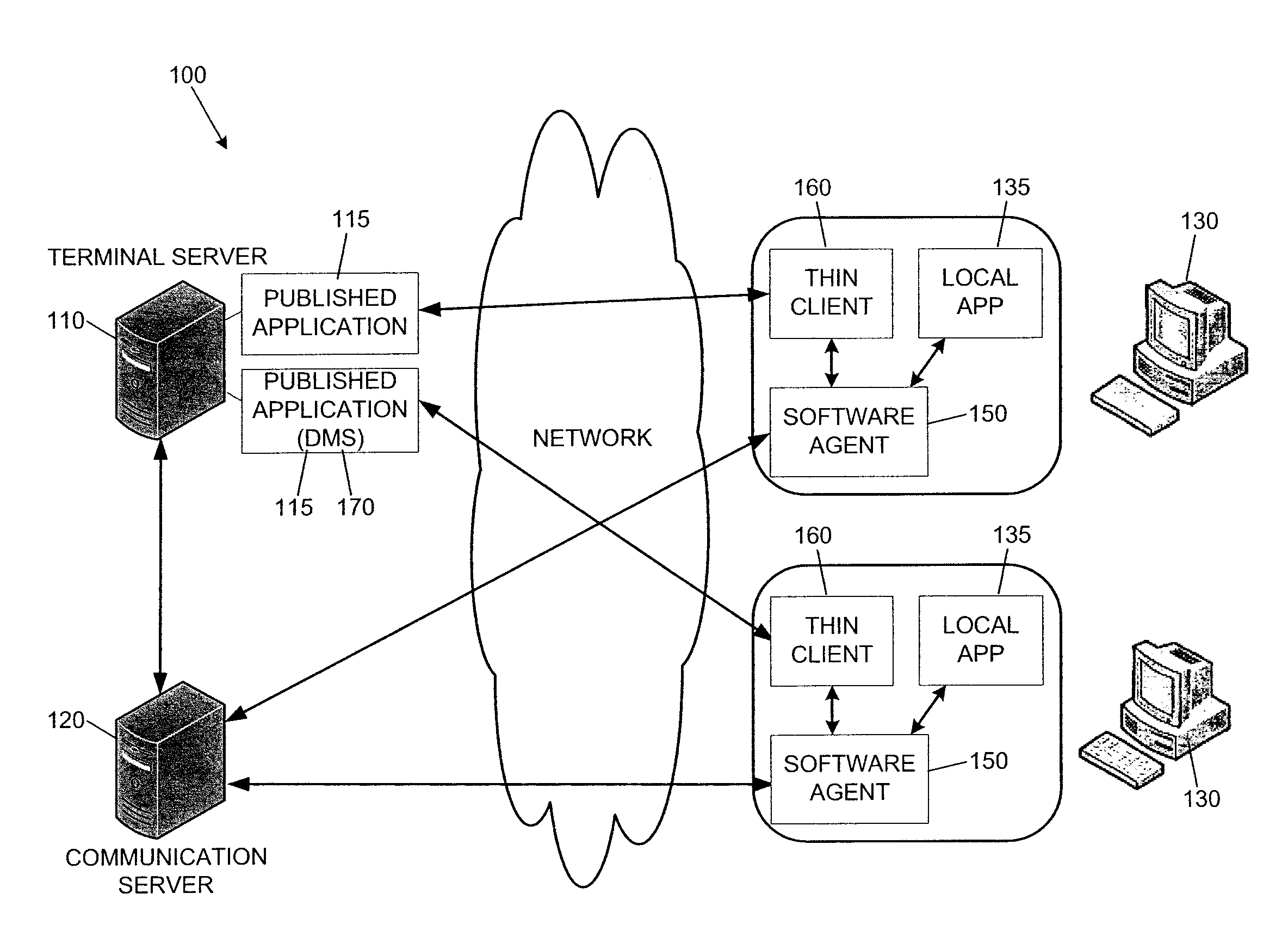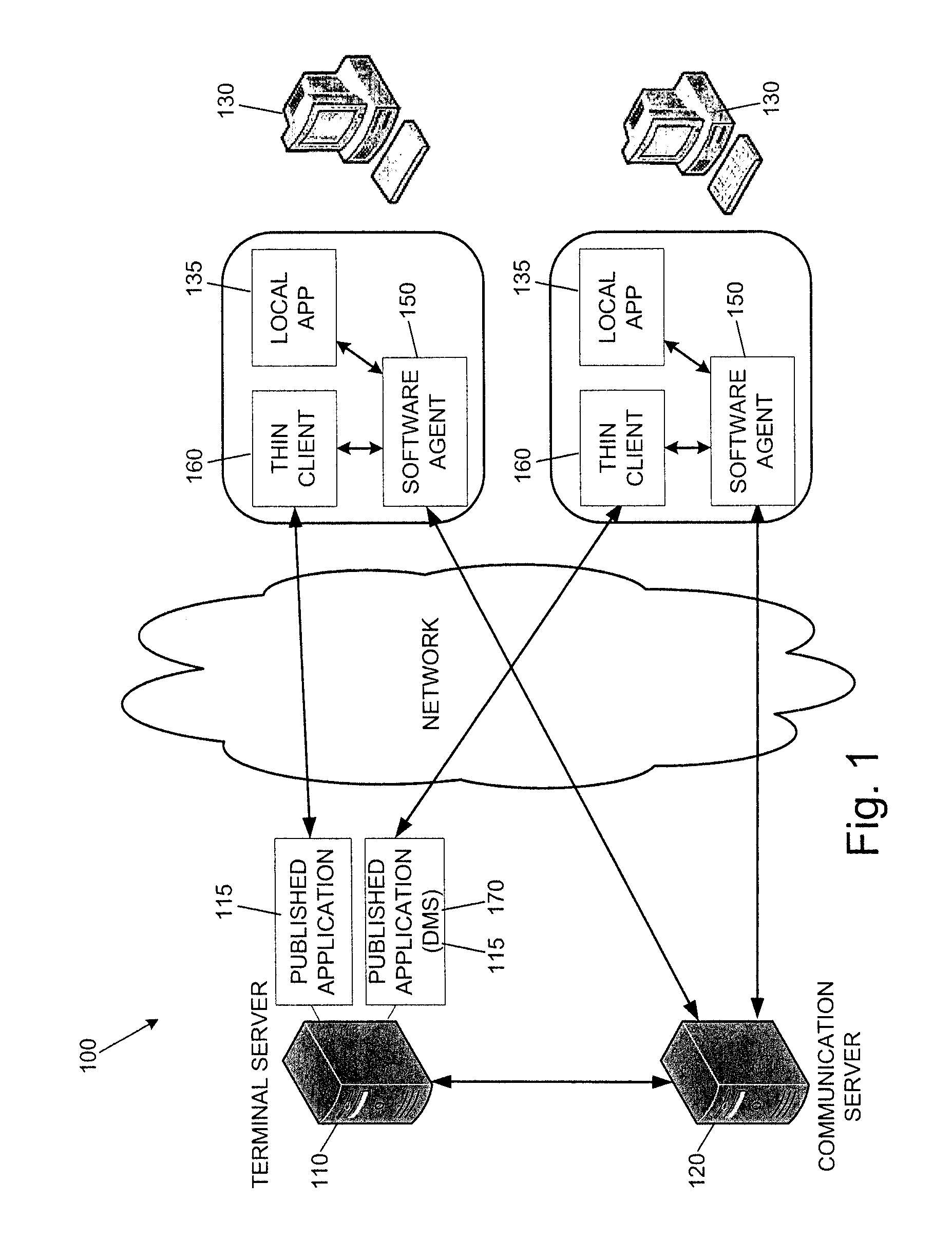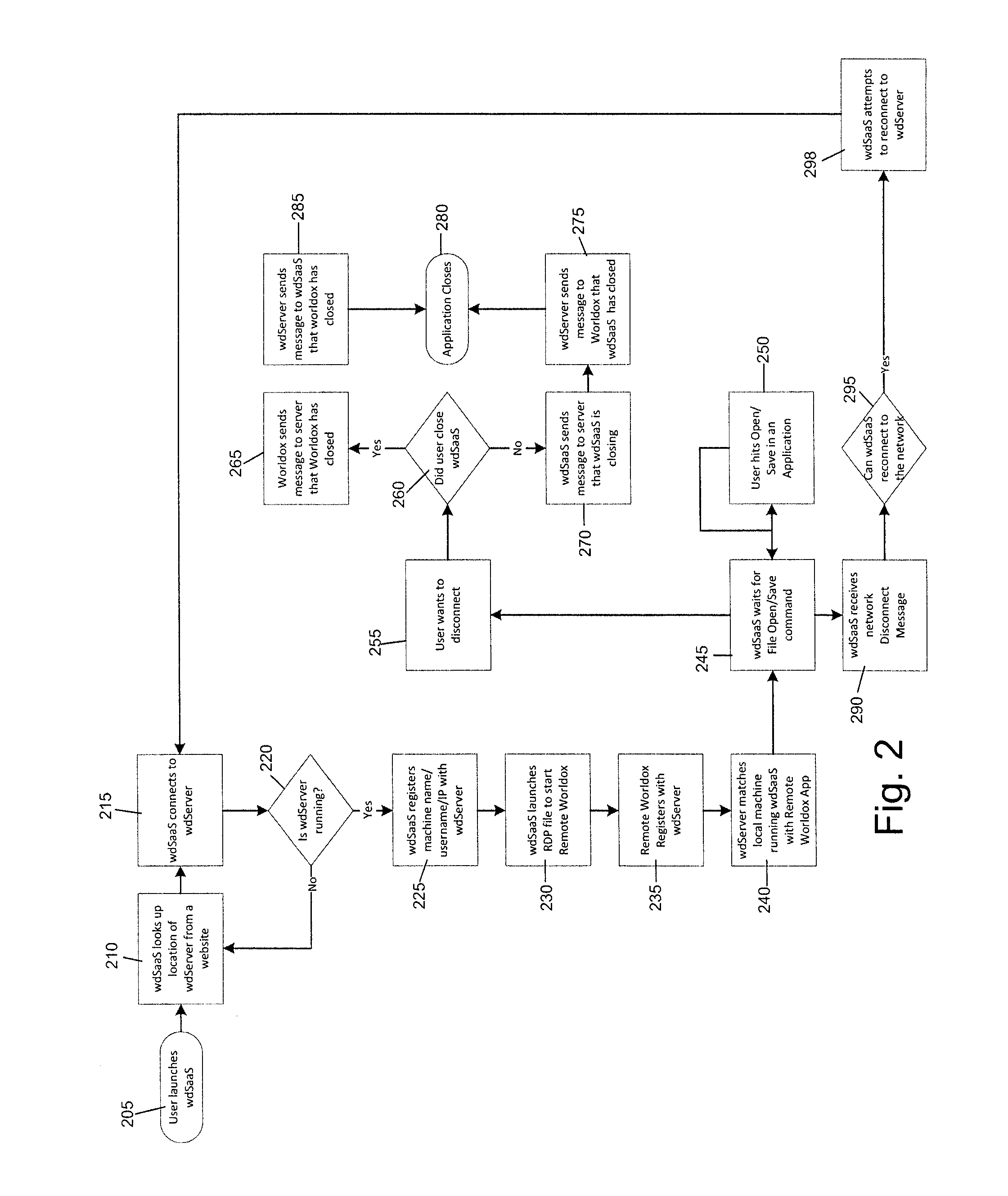Remote desktop and data management system
a data management system and desktop technology, applied in the field of remote desktop and data management system, can solve the problems of large processing and communication overhead required for this coordinated computing effort, large amount of computing resources, bandwidth, etc., and achieve the effects of improving communication and integration, improving application utilization, and efficient and cost-effectiveness
- Summary
- Abstract
- Description
- Claims
- Application Information
AI Technical Summary
Benefits of technology
Problems solved by technology
Method used
Image
Examples
example 1
Initiating Communications
[0065]FIG. 2 is a flowchart of a process to initiate and maintain communication between a local software agent, a remote communication server, a remote DMS, and a local or published user application, according to some embodiments of the invention.
[0066]At 205, a user at a client computer 130 launches a software agent 150 (e.g. wdSaas), which looks up a location of a communication server 120, at 210, and attempts to connect to the communication server 120, at 215. If, at 220, the software agent 150 determines that the located communication server 120 is not running or is not available, then the software agent looks up an alternative communication server 120, at 210. This process continues until a connection with a running communication server 120 is established, or until the attempts to establish a connection fail (not shown), for example by interrogating all available servers, by adopting a time-out procedure, or by other methods.
[0067]After the software ag...
example 2
Initiating File Open or File Save
[0071]FIG. 3 is a flowchart showing initiation of a file open or save process using the remote DMS 170, according to some embodiments of the invention.
[0072]At 310, the user may opt to open or save a document, such as at 250 in FIG. 2. Selecting to open or save may initiate a pop-up or dialog, for example a pop-up or dialog that is native to an application, whether local or published, that is associated with a client computer 130. The software agent 150 detects this pop-up at 320. At 330, the software agent 150 sends a message to the communication server 120, on which runs a DMS 170 (e.g. Worldox), indicating that a new file event has occurred. At 340, the communication server 120 sends a message to the terminal server 110 that a new file event has occurred.
[0073]If, at 350, the file event is an open-file event, then the software agent 150, in cooperation with thin client 160, instructs the relevant published application 115, such as the DMS 170, to...
example 3
Opening a File
[0074]FIG. 4 is a flowchart of the file open process, according to some embodiments of the invention.
[0075]When the user opts to open a file in the DMS 170 (e.g. Remote Worldox), the software agent 150 generates an open-file dialog, at 405. If the user does not hit escape or cancel, at 410, then the user can locate the file he wishes to open via the dialog (with or without associated functions, e.g., search), at 415. After locating the file, the user can indicate whether he wants to open the file or check out the file, at 420. If the user opts to check out the file, then the DMS 170 sets the check-out flag on the file, at 425. The check-out flag may be used to invoke a function that locks the document to edits from other client computers 130 able to access the DMS 170. Otherwise, the document is opened without being checked out. This is a “behind-the scenes” check-out process to lock the document from changes, while file operations are in progress. At 430, the communi...
PUM
 Login to View More
Login to View More Abstract
Description
Claims
Application Information
 Login to View More
Login to View More - R&D
- Intellectual Property
- Life Sciences
- Materials
- Tech Scout
- Unparalleled Data Quality
- Higher Quality Content
- 60% Fewer Hallucinations
Browse by: Latest US Patents, China's latest patents, Technical Efficacy Thesaurus, Application Domain, Technology Topic, Popular Technical Reports.
© 2025 PatSnap. All rights reserved.Legal|Privacy policy|Modern Slavery Act Transparency Statement|Sitemap|About US| Contact US: help@patsnap.com



